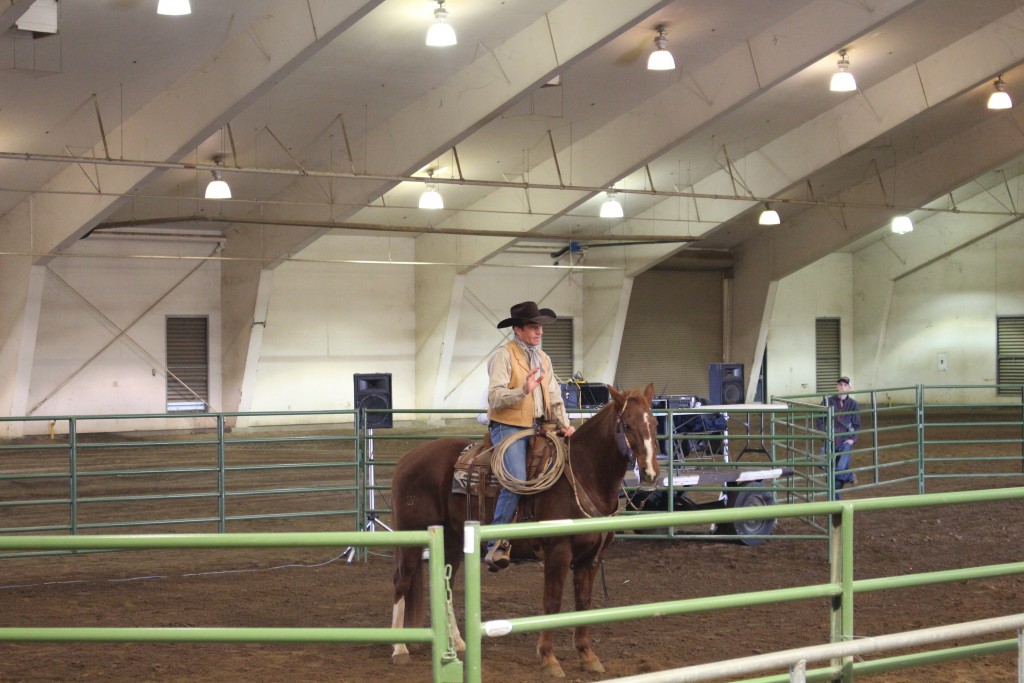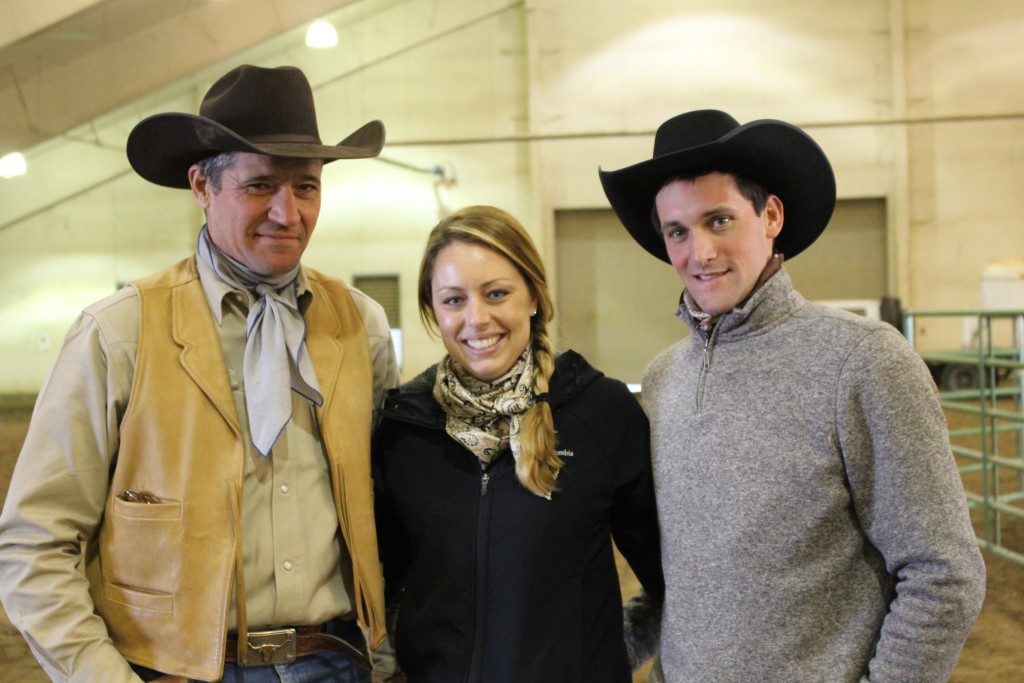Cattle handling plays a crucial role towards the bottom line of a ranch. The way in which a rancher works their cattle can directly correspond to their profitability. Just like humans, when cattle are stressed their immune systems can be compromised. An animal that isn’t healthy isn’t marketable and therefore not beneficial to the rancher. In todays day and age, we know that consumers want to see their food grown and handled in a responsible way. And we as ranchers have to maximize efficiencies in order to make a living. Luckily when we handle cattle in the proper way, both the consumer and the rancher mutually benefit.

This weekend, I was able to watch and learn from a professional in the industry and a man I have a great respect for, Mr. Curt Pate. Mr. Pate did a live demonstration on the subject of Stockmanship. He describes Stockmanship as “the knowledgeable and skillful handling of livestock in a safe, efficient, effective, and low stress manner with the intent of enhancing ranch profitability and improving animal welfare.” I love that definition. It proves that what the consumer AND the rancher want are indeed the exact same thing!
The ranching profession is based on history and tradition. And while there are some things that should never change, I believe there are some things that should. It is crucial to progress in both knowledge and skill. These two things are the baseline for what makes a rancher successful. As Mr. Pate says, “handling livestock is a skill, and skills are learned and improved upon.”
Some other interesting things I learned from Curt were:
1) Choose a side. You should never work from directly behind the animal. Cattle can’t see directly behind their body so when you pressure them from that spot, you put unnecessary stress on the animal.
2) You can set up an animal to move a certain direction by working the nose of that animal rather than the feet or the backside. Draw their eyes to the direction you want them to go and then put necessary pressure for them to move that way.
3) To get cattle to move where you want them to, you need to know both when to put on the pressure and when to back off the pressure. Often times it’s more about understanding how to back off.
Mr. Pate, while being progressive and innovative in his ideas, still sticks to the basics. Something I’ve been taught on our cow/calf operation from day one and something he mentioned during his clinic was “don’t ever mess with nature!”. My grandfather was a firm believer in not messing with the mother cows during or after calving unless there was something drastically wrong. Those first few days are crucial to the bond between the cow and the calf and therefore the health of the animal.

Thank you, Mr. Pate, for the opportunity to learn and for the friendship. It was a pleasure and we hope you come back again soon!
For more information and teachings from Curt Pate, head on over to his website!
